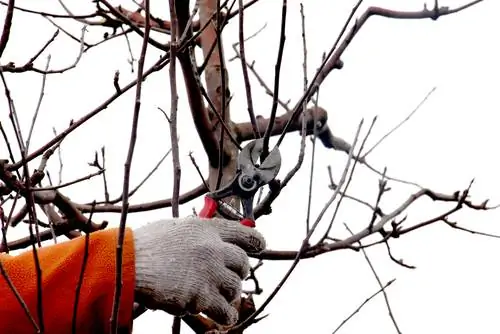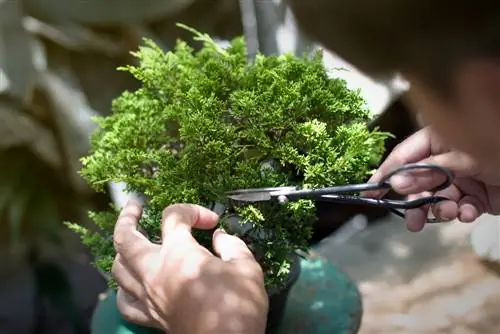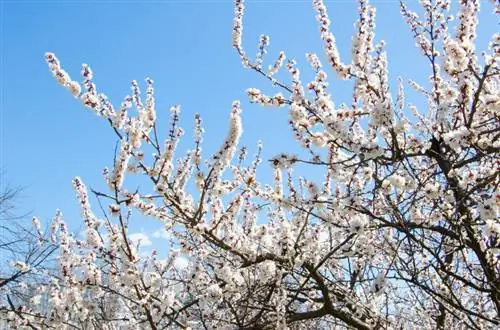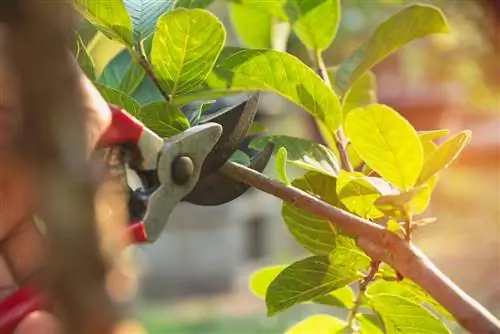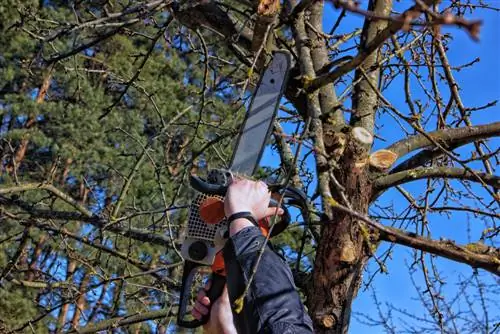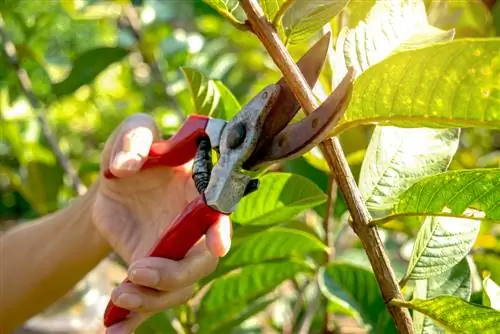- Author admin [email protected].
- Public 2023-12-16 16:46.
- Last modified 2025-01-23 11:22.
Crispy fresh fruit, straight from the tree: In order for fruit trees to produce plenty, they must be cut correctly. The best time of year for this is late winter, when the tree is still dormant but new growth is not too far away. You can find out how to do this in the following article, in which we would like to introduce you to the proven Oeschberg technology in more detail.
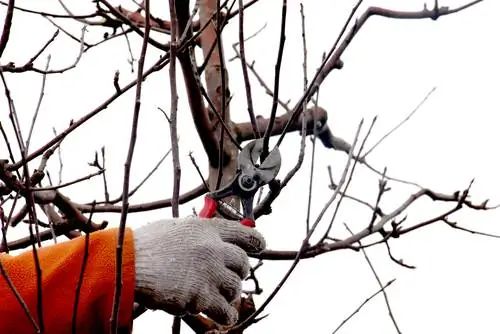
How should you properly prune fruit trees?
To prune fruit trees correctly, you should use the Oeschberg technique: make targeted cuts during the vegetation-free period in order to develop stable leading branches and fruit wood. Cut the tree from the outside in and get as many horizontal fruit branches as possible.
What is important about this cutting technique?
This technology, which has also been used in professional fruit cultivation since 1920, is based on proactive cutting and knowledge of the growth laws of fruit trees:
- By making targeted cuts, you decide which branches will later form the tree framework. The branches should grow strong and without any competing shoots.
- Cutting back, bending or breaking produces fruit wood that grows horizontally, preferably in the lower area.
When will it be cut?
Fruit trees should be cut during the vegetation-free period, which in our latitudes lasts from the end of October to the beginning of April. A common mistake made by new gardeners is:
- Young trees should not be pruned at all or too little.
- shortening old trees too much.
Especially with young trees, it is important not to cut too hesitantly so that they develop a stable crown and good fruiting wood.
How should a fruit tree be structured?
Experts recommend a slightly S-shaped tree structure with a maximum of four leading branches. These should be arranged so that you can easily place a ladder between them for later harvesting. Side branches grow from the leading branches, on which the fruit wood forms.
How to cut?
Due to ignorance, incorrect abbreviations are often made:
- People often start cutting from the bottom near the trunk, removing any branches that grow inwards.
- Future side branches, which would be important for building the crown, also fall victim to this cut.
It would be correct to cut the tree from the outside in. Pictures of optimally cut fruit trees serve as a template for the layperson. Pay particular attention to the distribution and position of the main branches, as these are the framework of the tree.
How can we get as many fruit branches as possible?
It is important that the branch grows as straight as possible. In order for this to be successful, it is “broken” or “bent”, as this measure is called in technical jargon. This means they straighten the branch with a little force. Young branches survive this without any problems and grow again.
Tip
The tree does not bear fruit on the leading branches, but on the short shoots that sprout horizontally. You can recognize fruit buds by their round, plump shape, while leaf buds are flat and pointy and sit on branches that grow steeply upwards.

